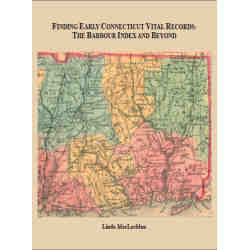
In the following excerpt from her acclaimed book, Evidence Explained: Citing History Sources from Artifacts to Cyberspace. 3rd Edition Revised, Elizabeth Shown Mills explains that the terms proof, source, and evidence have different and distinct meanings. Moreover, a proof argument in genealogy must consist of a number of demonstrable components. Whether we are reading Ms. Mills’ explanation for the first or the tenth time, her sage counsel should guide us with the difficult cases we encounter along our genealogical journeys.
“Laymen often use the term proof interchangeably with both source and evidence. In historical research, each of the three has a different meaning. A source may offer relevant information whose evidence we carefully consider. Yet, at the end of that consideration we may decide that its information proves nothing.
Proof is a conclusion supported by three things: (a) thorough research and documentation; (b) reliable evidence correctly interpreted and carefully correlated; and (c) a well-reasoned analysis. The most reliable proof is a body of information drawn from multiple sources—all quality materials, independently created and accurately representing the original facts.
When direct evidence exists and we conclude that it is reliable, our statement of “proof” may require nothing more than a simple citation to the source. When multiple pieces of direct evidence exist, we may need to summarize the evidence—i.e., a proof summary. More often, proof involves an assimilation of indirect evidence or a resolution of contradictory evidence—situations commonly referred to as building a case. In those circumstances, a written proof argument is essential.
A proof argument is the paper or discussion by which we present our case for a conclusion. Although every proof argument is shaped by the nature of both the problem and the evidence, a proof argument consists of five essential parts:
- explanation of the problem;
- identification of known and missing resources;
- presentation of evidence, supported by thorough source citations and analyses;
- discussion and resolution of any conflicting evidence;
- summation of main points and reiteration of the conclusion.
A proof argument is expected to be clearly organized, logically reasoned, and completely documented. When contradictory or conflicting evidence exists, we must address it and offer quality evidence or reasoning to rebut the contradiction or resolve the conflict.”
Excerpted from Elizabeth Shown Mills, Evidence Explained: Citing History Sources from Artifacts to Cyberspace,3d ed. rev. (Baltimore: Genealogical Publishing Co., 2017), p. 26, §1.14–1.15.






My grandmother was a full noodled Cherokee who married a white man I am tring to find her maidan name she came from orth Carlitos or Virginia ay help would be glady accerpeted